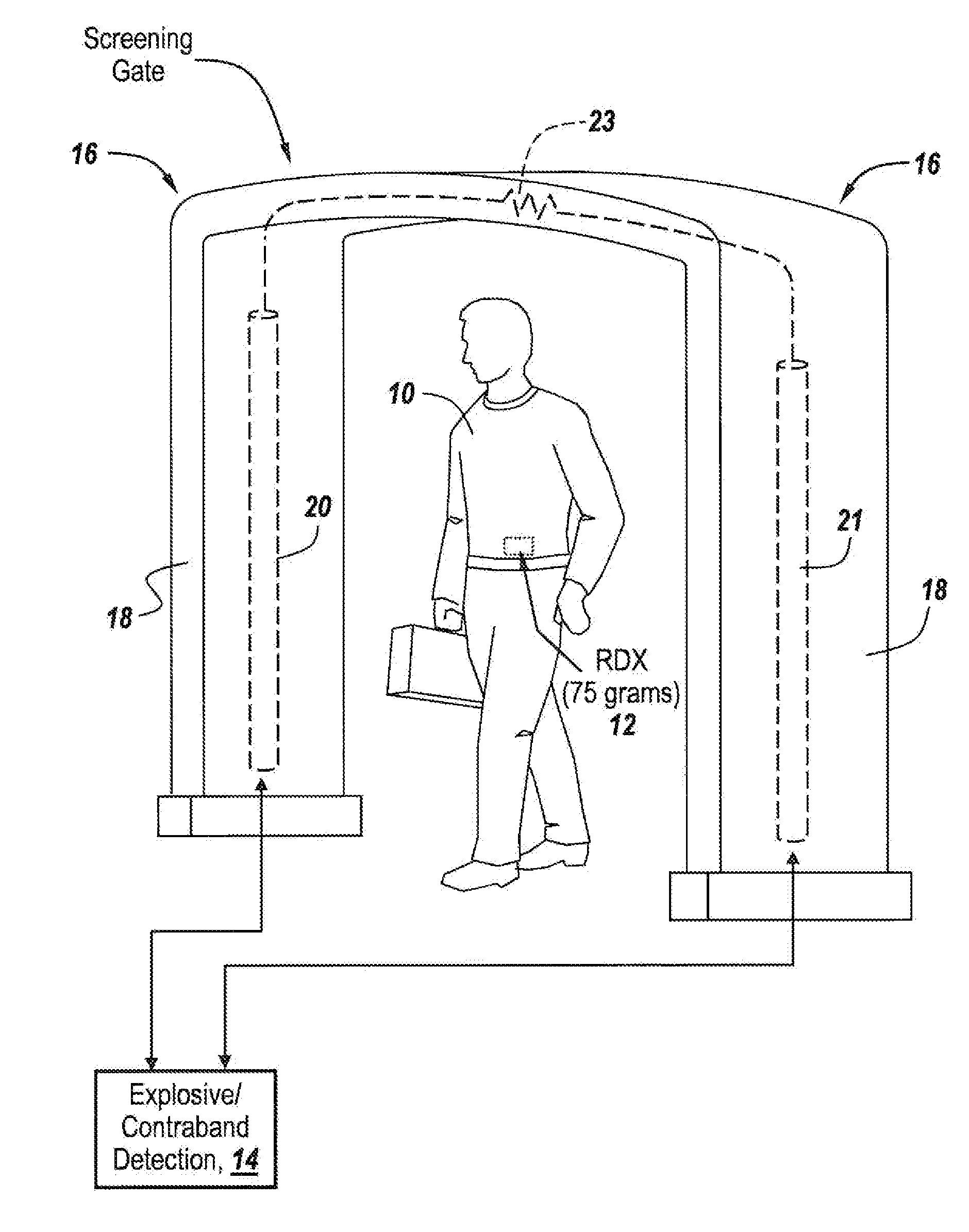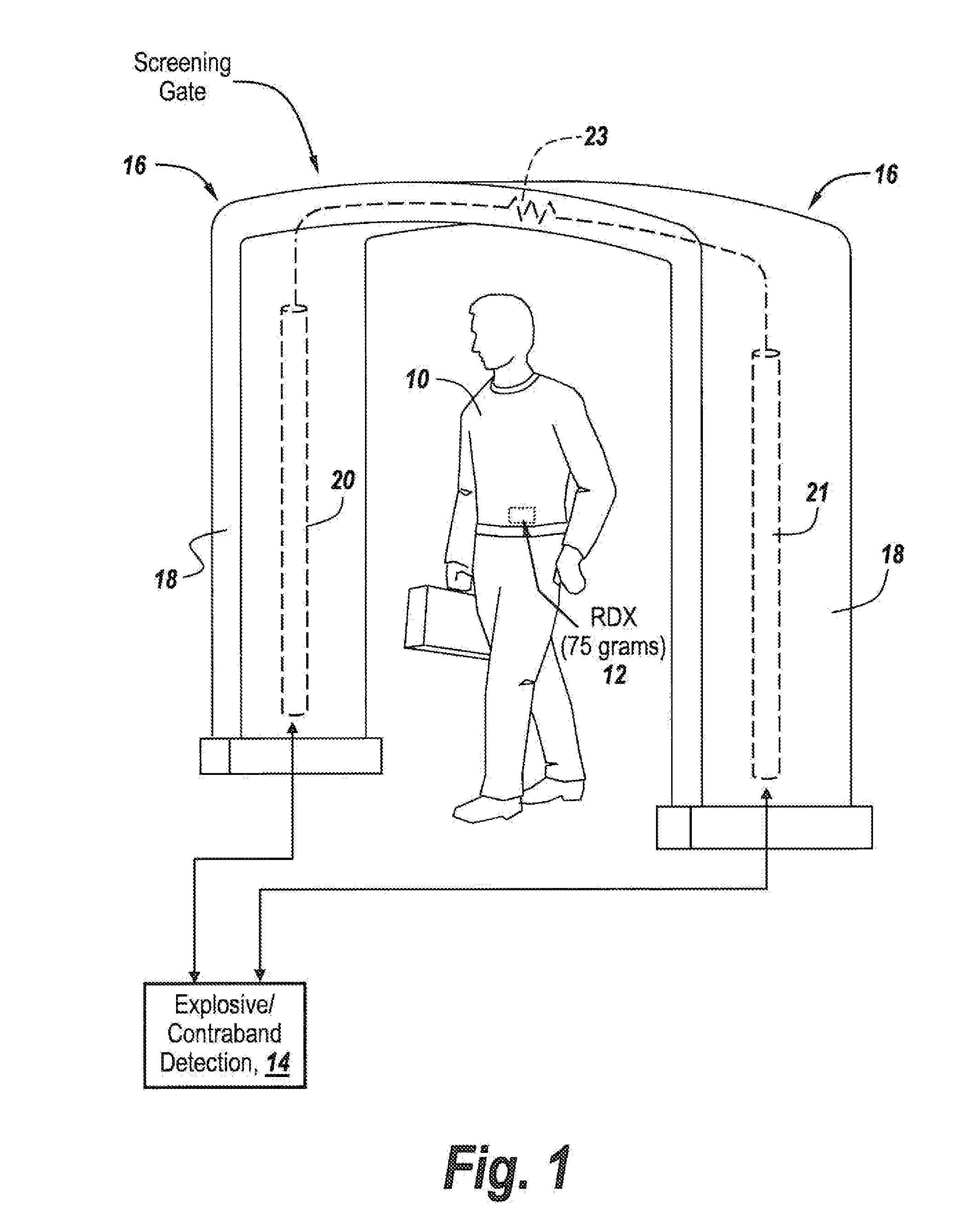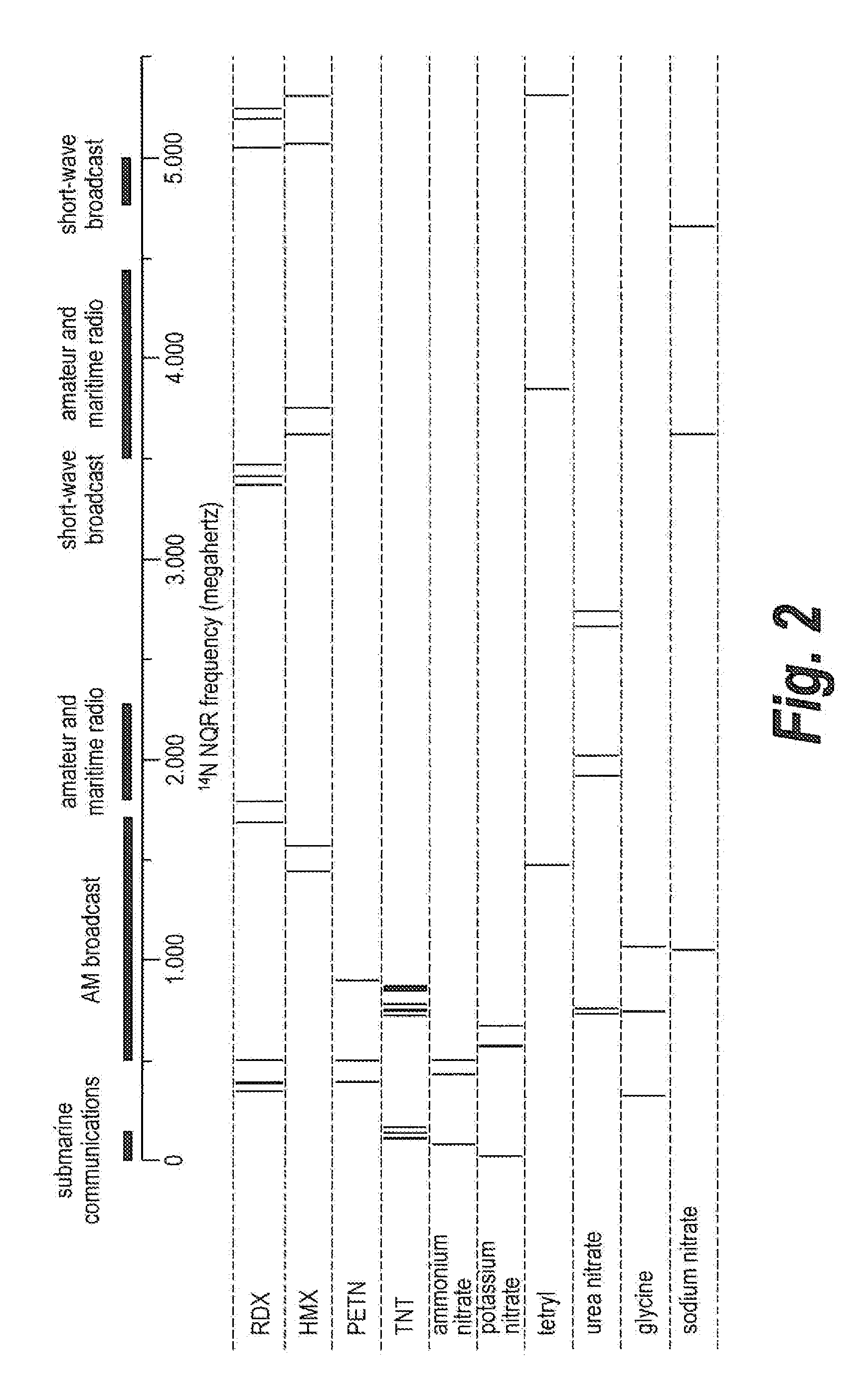Shipping container explosives and contraband detection system using nuclear quadrupole resonance
a technology of quadrupole resonance and shipping container, which is applied in the direction of reradiation, measurement using nmr, instruments, etc., can solve the problems of inability to use the technique to penetrate metal shipping containers, certain detection problems, and cumbersome processes
- Summary
- Abstract
- Description
- Claims
- Application Information
AI Technical Summary
Benefits of technology
Problems solved by technology
Method used
Image
Examples
Embodiment Construction
[0082]Prior to describing the subject shipping container-carried substance detection system, the Nuclear Quadrupole Resonance Technique on which the subject invention is based is now discussed.
[0083]Referring now to FIG. 1, an individual 10 may be carrying on his or her person some contraband or explosives 12 which may for instance may be secreted in his or her underwear, or could even be surgically implanted. One such explosive is RDX and it is the purpose of the subject invention to be able to detect explosives in as little quantity as 75 grams which is approximately about a fifth of a cup. Terrorists and the like are using more and more sophisticated ways of secreting explosives and / or contraband and a physical examination of the individual may not yield the presence of such explosives or contraband. Not only may the explosives or contraband be surgically implanted in the individual, they may be swallowed in bags and be held internally in the gut until such time as their “removal...
PUM
 Login to View More
Login to View More Abstract
Description
Claims
Application Information
 Login to View More
Login to View More - R&D
- Intellectual Property
- Life Sciences
- Materials
- Tech Scout
- Unparalleled Data Quality
- Higher Quality Content
- 60% Fewer Hallucinations
Browse by: Latest US Patents, China's latest patents, Technical Efficacy Thesaurus, Application Domain, Technology Topic, Popular Technical Reports.
© 2025 PatSnap. All rights reserved.Legal|Privacy policy|Modern Slavery Act Transparency Statement|Sitemap|About US| Contact US: help@patsnap.com



